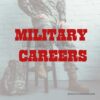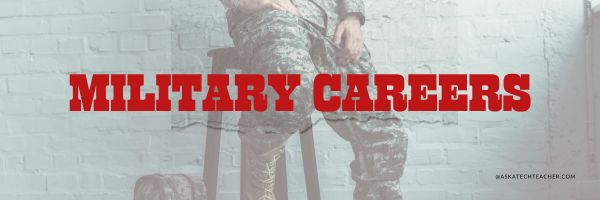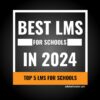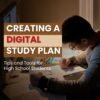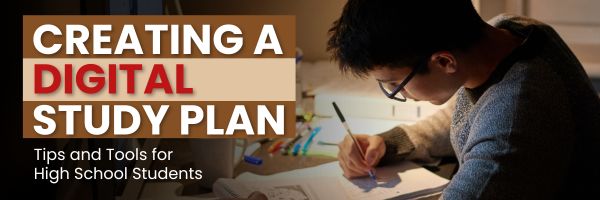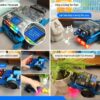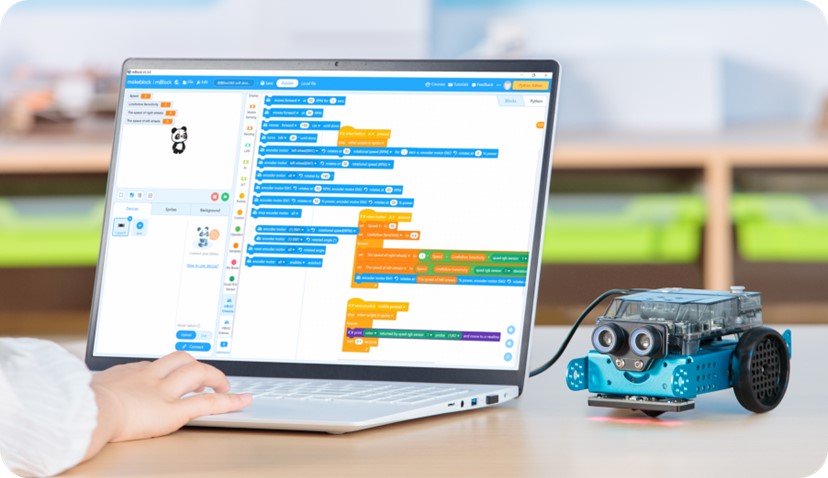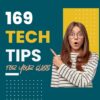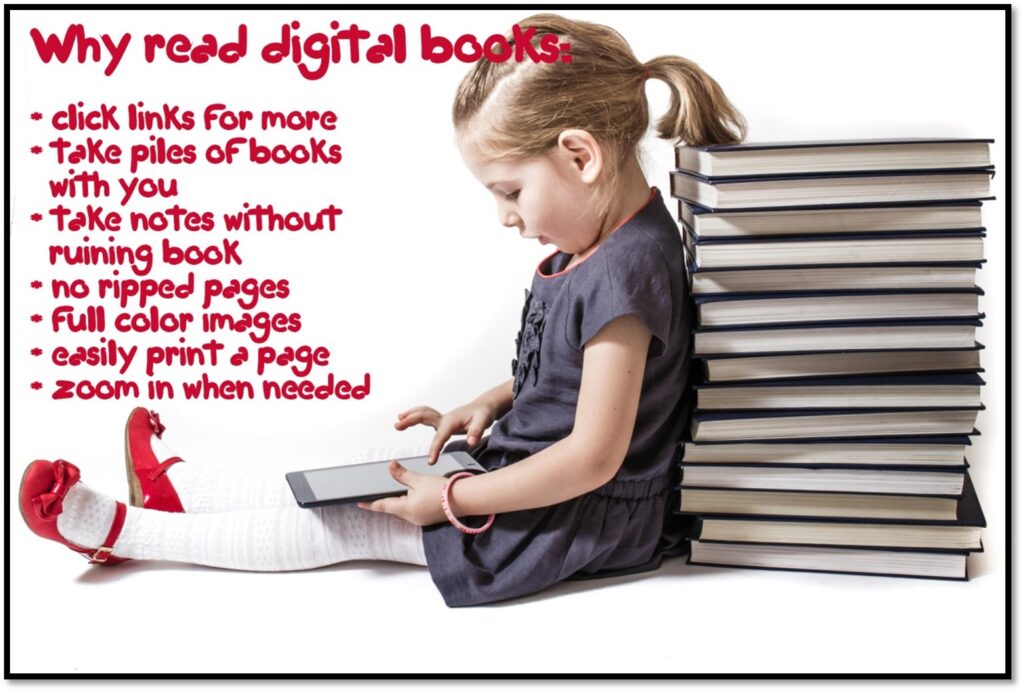Year: 2024
ASVAB or a Service Academy? You Decide.
If you want to join the military, you can do that by attending a four-year Service Academy or by enlisting. I discussed 11 ways to become a Navy Officer in an earlier article (click for link). Here, I’ll focus on the academics required to be accepted as an enlisted soldier or sailor.
Anyone interested in a non-four-year-degree entry into the military services must take the ASVAB– the Armed Services Vocational Aptitude Battery (ASVAB). It’s multiple choice test administered by United States Military Entrance Processing Command prior to enlistment. Areas of competence include: (more…)
Share this:
Autumn Websites
- Autumn Facts for Kids
- Don’t “Leaf” Out Fall’s Most Valuable Lesson
- EEK! A Tree’s True Color
- Fall Bucket List For Families Printable
- Fall Crafts, Decorations, and Printouts
- Fall Books & Short Stories For Kids about Autumn
- Primary Games’ Fall Fun
- Science Made Simple: Why Do Leaves Change Color in Fall?
- Why Leaves Change Color
Click for an updated list (more…)
Share this:
I’m Traveling with my Kids! Sept. 18-29

September 18-29
I’m off to visit my two military children and then my sister. My son is preparing to deploy overseas to places I won’t mention while my daughter does what she can to keep him safe. After time with them, I’ll go see my sister in rural Marion, Indiana for a recentering. I hear a James Dean car show is on the agenda! As a result, I won’t be around much–a bit, but forgive me if I seem to be ignoring everyone!
See you-all in a few weeks!
–comments are closed because I might be on a plane!
Share this:
Best LMS for Schools in 2024
The Ask a Tech Teacher team has come up with the best little-known LMS platforms for 2024. Honestly, we hadn’t heard about most of these before one of our international team members brought them to our attention. If you’re looking for an alternative to your current LMS, check out these. Read on to learn key criteria for choosing the right LMS to enhance your school’s digital learning experience
Best LMS for Schools in 2024
In the rapidly evolving landscape of education technology, Learning Management Systems (LMS) have become an integral part of modern schools, facilitating efficient administration and enhancing the overall learning experience. As schools continue to embrace digital transformation, the demand for robust LMS platforms tailored for educational institutions is on the rise. In this guide, we will delve into the intricacies of choosing the best LMS for schools in 2024, highlighting the top 5 platforms that stand out in the competitive market.
Note: We noticed that InnovateClass doesn’t populate a website. Normally, we cross out expired sites, but in this case, it does connect readers with a lot of good information about the innovative classroom.
Top 5 LMS for Schools in 2024
Share this:
Creating A Digital Study Plan: Tips And Tools for High School Students
With school back, let’s talk about the most efficient ways to study. Here are a few tips from the Ask a Tech Teacher team for High School students who want to get the most out of these important years:
Creating A Digital Study Plan: Tips And Tools for High School Students
Developing a digital study plan can be a game-changer for high school students aiming to improve their academic performance. With increasing coursework and extracurricular activities, a structured approach to studying helps manage time effectively, reduces stress, and boosts learning outcomes.
Thanks to the many types of digital tools available, creating a personalized study plan that suits your needs is easier than ever. By utilizing these tools, you can organize your schedule, set clear goals, and track your progress seamlessly, ensuring you stay on top of your studies.
According to research conducted at Stanford University, over 70% of high school students report feeling stressed about their academic workload. A well-structured digital study plan can help alleviate this stress by providing a clear path to manage assignments, study sessions, and personal time. In the following sections, we’ll explore how high school students can use digital tools to enhance their study habits and academic success.
Leveraging Digital Tools For Efficiency
For high school students, leveraging digital tools is essential to managing the demanding balance of academics, extracurriculars, and social life. Digital calendars, such as Google Calendar or Microsoft Outlook, are invaluable for scheduling study sessions and setting reminders for important deadlines. These tools provide a visual representation of your study plan, making it easier to adjust and stay on track.
Numerous online resources exist where you can find lecture notes, study guides, and other helpful materials. For example, you could find a selection of study material at Studocu that you can utilize. These resources can complement your study plan and provide additional support. Cloud storage solutions enable you to access your study materials from anywhere, making it easier to study on the go. Organizing your digital files into folders by subject or topic can further streamline your study process and ensure you can quickly find the materials you need.
Organizing Your Digital Study Resources
Effective organization of digital study resources is crucial for high school students striving to maintain a smooth and productive study routine. With multiple subjects and various types of assignments to manage, keeping your digital materials well-organized can significantly reduce stress and save time.
Start by creating a dedicated folder for each subject on your device or cloud storage platform. Within these folders, further categorize materials by topics, chapters, or types of content (e.g., homework, lecture notes, practice tests). This systematic approach allows you to quickly locate the resources you need when studying or completing assignments.
Tagging files with keywords related to specific topics or concepts can also streamline the process of finding materials. For example, if you’re studying for a biology exam, tagging relevant documents with terms like “photosynthesis” or “cell division” can help you quickly retrieve the information you need.
Regularly updating and decluttering your digital folders ensures that your study materials remain relevant and useful. Backup your files frequently to avoid losing important documents. Keeping lecture notes, study guides, and other resources well-organized saves time and reduces the frustration of searching for materials during study sessions. A well-maintained digital library enhances productivity and allows you to focus more on learning and less on logistics.
Designing A Flexible Study Schedule
Creating a flexible study schedule is essential for high school students who need to juggle academic commitments with extracurricular activities, part-time jobs, and social life. A well-structured yet adaptable schedule helps ensure that you cover all necessary topics while allowing room for adjustments as needed.
Start by identifying the subjects or topics that require the most attention. High school students often have a mix of core subjects, such as math, science, and English, along with electives or advanced placement (AP) courses. Prioritizing subjects based on difficulty or upcoming deadlines can help you allocate your study time more effectively. For example, if you have a math test coming up, you might dedicate more time to reviewing formulas and practicing problems in the days leading up to the exam.
Once you’ve identified your priorities, use a digital calendar or scheduling app to create a study timetable. Tools like Google Calendar or My Study Life are popular among high school students for their user-friendly interfaces and customization options. These apps allow you to block out time for each subject, set reminders for upcoming exams and assignments, and visualize your weekly schedule.
Tracking Progress And Adjusting Plans
Regularly tracking your progress is crucial for high school students aiming to meet their academic goals. Monitoring your performance allows you to see what’s working and identify areas that may need improvement. By using digital tools to track your progress, you can ensure that your study plan remains effective and aligned with your objective.
Start by setting specific, measurable goals for each subject. For example, if you’re working on improving your grade in history, you might set a goal to raise your exam score by 10% over the next month. Breaking down larger goals into smaller milestones can make them more manageable and give you a sense of accomplishment as you achieve each one.
Digital tools like Grade Calculator or My Study Life can help you track your grades and monitor your progress in real-time. These tools allow you to input your assignment scores and exam results, providing an up-to-date overview of your academic performance.
A study conducted in Prince William County, Virginia, provides insights into how individual students can benefit from tracking their own academic progress. Middle school social studies teacher Erin Merrill implemented a system where students use a data notebook to track their mastery of specific standards.
This approach aligns with standards-based grading, where students are assessed based on their understanding of clearly defined learning targets. Students can visualize their progress by marking whether they failed, passed, or mastered each standard, and by recording their scores on charts.
The results of implementing this system were positive. Merrill reported a 100% pass rate on the Standards of Learning (SOL) assessments after introducing the data notebooks. Students expressed that they felt more prepared for standardized tests and appreciated the ability to see their progress. This method not only improved test scores but also empowered students to take ownership of their learning, fostering independence and self-advocacy
Engaging With Study Groups And Online Communities
Engaging with study groups and online communities can be incredibly beneficial for high school students. Collaborative studying allows you to share resources, discuss challenging topics, and gain different perspectives. Online platforms offer forums to connect with peers, seek help, and share study materials.
According to a study on student use of out-of-class study groups in an introductory biology course, there were no significant differences in exam scores between students who participated in study groups and those who did not. For example, on exam 1, students who used a study group scored an average of 77.0% ± 7.6, while those who did not use a study group scored 79.2% ± 9.5. Similarly, on exam 3, study group participants scored 80.3% ± 12.3 compared to 80.5% ± 7.4 for non-participants.
When engaging with study groups, set clear goals and guidelines to ensure productive sessions. Online communities can also offer a sense of camaraderie, reducing feelings of isolation, especially during intense study periods. Effective collaboration and interaction with others can enhance your understanding and make studying more enjoyable and less solitary.
Maintaining Motivation And Managing Stress
Maintaining motivation and managing stress are key components of a successful study plan for high school students. Setting short-term rewards for achieving study goals can keep you motivated. Regularly reminding yourself of the long-term benefits of your studies can also boost your motivation.
Incorporate relaxation techniques into your routine to manage stress. Mindfulness, deep breathing exercises, and regular physical activity can help maintain mental well-being. Digital tools and apps focused on mental health can offer guided relaxation sessions and stress management tips. Balancing study and self-care ensures you remain focused, motivated, and capable of handling academic pressures.
Balancing study with self-care is essential for maintaining long-term motivation and managing stress. By taking care of your mental and physical health, you’ll be better equipped to handle the challenges of high school and achieve your academic goals.
Here’s the sign-up link if the image above doesn’t work:
https://forms.aweber.com/form/07/1910174607.htm
“The content presented in this blog are the result of creative imagination and not intended for use, reproduction, or incorporation into any artificial intelligence training or machine learning systems without prior written consent from the author.”
Jacqui Murray has been teaching K-18 technology for 30 years. She is the editor/author of over a hundred tech ed resources including a K-12 technology curriculum, K-8 keyboard curriculum, K-8 Digital Citizenship curriculum. She is an adjunct professor in tech ed, Master Teacher, webmaster for four blogs, freelance journalist on tech ed topics, contributor to NEA Today, and author of the tech thrillers, To Hunt a Sub and Twenty-four Days. You can find her resources at Structured Learning.
Share this:
18 Digital Tool Musts in the Classroom — a Video
18 Digital Tool Musts in the Classroom
This video is from a series I taught for school districts. It is now available for free, here on Ask a Tech Teacher:
Summary
18 essential digital tools for classrooms, emphasizing their impact on modern education.
Highlights
- ✏️ Annotation Tools: Essential for digital note-taking.
- 👤 Avatars: Promote digital citizenship and privacy.
- 💬 Backchannel Devices: Enhance classroom communication.
- 🗓️ Class Calendars: Keep students organized and informed.
- 🌐 Class Websites: Centralize classroom resources and communication.
- 📚 Digital Portfolios: Collect and showcase student work.
- 📊 Online Quizzes: Provide fun and quick assessments.
Key Insights
- 📝 Annotation tools like Notability and Adobe Acrobat empower students to engage with digital texts actively, fostering comprehension and retention.
- 🎨 Using avatars instead of personal images encourages student privacy and encourages creativity in digital representation, reinforcing digital citizenship principles.
- 🌍 Backchannel communication tools like Padlet and Twitter create a collaborative classroom environment where students can ask questions and share ideas in real time.
- 📅 Integrating class calendars keeps students accountable and involved in managing their schedules, enhancing organizational skills from an early age.
- 🖥️ Class websites serve as a hub for resources, helping parents and students stay connected and informed about class activities and expectations.
- 📂 Digital portfolios allow students to curate their work, promoting self-reflection and ownership of their learning journey while simplifying the grading process for teachers.
- 🎉 Online quizzes not only engage students but also provide instant feedback, enabling educators to identify learning gaps and adjust instruction accordingly.
–summarized by NoteGPT
This video is from a series I taught for school districts. It is now available for free to Ask a Tech Teacher subscribers. Videos include (in alphabetic order):
- 15 Webtools in 15 Weeks
- 18 Digital Tools in the Classroom
- A focus on strategies
- Alternative tools
- Assessment isn’t static
- Author doers
- BYOD
- Class warm-ups
- Collaboration
- Curriuculum Maps
- Differentiation–How to teach the hard-to-teach class
- Digital Citizenship: What to Teach When
- Flipping the classroom
- Gamification of education
- How to Teach a Tech Lesson
- Presentation Boards
- Tech-infused classroom
- Tech tools
- The 20% rule
- Using backchannel devices
- Warm-ups
Here’s the sign-up link if the image above doesn’t work:
https://forms.aweber.com/form/07/1910174607.htm
“The content presented in this blog are the result of creative imagination and not intended for use, reproduction, or incorporation into any artificial intelligence training or machine learning systems without prior written consent from the author.”
Jacqui Murray has been teaching K-18 technology for 30 years. She is the editor/author of over a hundred tech ed resources including a K-12 technology curriculum, K-8 keyboard curriculum, K-8 Digital Citizenship curriculum. She is an adjunct professor in tech ed, Master Teacher, webmaster for four blogs, freelance journalist on tech ed topics, contributor to NEA Today, and author of the tech thrillers, To Hunt a Sub and Twenty-four Days. You can find her resources at Structured Learning.
Share this:
America, We Remember
9-11 Day has become Patriot Day here in America, but it doesn’t change its purpose: to show how much we love our country.
[youtube https://www.youtube.com/watch?v=EvsN0Id4LEg?version=3&rel=1&showsearch=0&showinfo=1&iv_load_policy=1&fs=1&hl=en&autohide=2&wmode=transparent]
[youtube https://www.youtube.com/watch?v=mwcWVs4Eejg?si=nfBd6Unur6CmgiUH&start=35]
If you aren’t familiar with this terrorist attack, here’s a 2-minute overview:
[youtube https://www.youtube.com/watch?v=9uOn7xLYPbc?version=3&rel=1&showsearch=0&showinfo=1&iv_load_policy=1&fs=1&hl=en&autohide=2&wmode=transparent]
[youtube https://www.youtube.com/watch?v=A9oPmD6XJD0?si=LBKrjDQzQnYmLey2] [youtube=http://www.youtube.com/watch?v=6TPgJSZf5Vw&w=420&h=315]
–Comments are closed to enjoy the day more completely.
Here’s the sign-up link if the image above doesn’t work:
https://forms.aweber.com/form/07/1910174607.htm
“The content presented in this blog are the result of creative imagination and not intended for use, reproduction, or incorporation into any artificial intelligence training or machine learning systems without prior written consent from the author.”
Jacqui Murray has been teaching K-18 technology for 30 years. She is the editor/author of over a hundred tech ed resources including a K-12 technology curriculum, K-8 keyboard curriculum, K-8 Digital Citizenship curriculum. She is an adjunct professor in tech ed, Master Teacher, webmaster for four blogs, freelance journalist on tech ed topics, contributor to NEA Today, and author of the tech thrillers, To Hunt a Sub and Twenty-four Days. You can find her resources at Structured Learning.
Share this:
Introducing the Makeblock mBot2: A Fun and Educational AI Robot for Coding
Introducing the Makeblock mBot2: A Fun and Educational AI Robot for Coding
The Makeblock mBot2 is a delightful and educational AI robot designed to captivate the interest of children aged 8-12 in the fields of STEM. This robot toy not only provides an engaging visual learning experience but also teaches essential skills in programming, electronics, robotics, and computer science. It is a popular choice for educational settings such as classrooms and after-school programs, as well as for home use, fostering the development of logical thinking, problem-solving, and project creation abilities.
A Beginner-Friendly STEM Kit with Rich Educational Resources
The mBot2 is an ideal starting point for young robotics enthusiasts, offering an easy-to-assemble kit that most children can build in less than 30 minutes. This quick setup allows them to jump right into coding and interactive play. The mBot2 is also supported by a rich collection of educational materials, including free access to mBlock, a coding software that makes learning both fun and accessible. For those who prefer a structured learning path, more than eight free courses are available, covering topics like computer science, coding, and STEM fields. These courses teach students how to apply theoretical concepts in real-world scenarios, with over 33 instructional cases that explore the mBot2’s capabilities, such as obstacle avoidance and line-following. (more…)
Share this:
Tech Tip #139: 9 Reasons to Use Digital Books
In these 169 tech-centric situations, you get an overview of pedagogy—the tech topics most important to your teaching—as well as practical strategies to address most classroom tech situations, how to scaffold these to learning, and where they provide the subtext to daily tech-infused education.
Today’s tip: Using digital books
Category: Problem-solving
As you discuss reading and the technology tools that inspire students in this activity, here’s a poster with nine reasons why students will love digital books:
They’re light-weight, easy to transport, provide links for deeper learning, differentiate for student needs (like zoom to see better or a change of font), allow for the addition of notes that can be erased, and pages never rip. What more could you ask?
Sign up for a new tip each week below or buy the entire 169 Real-world Ways to Put Tech into Your Classroom.
What’s your favorite tech tip in your classroom? Share it in the comments below.
Share this:
The Role of Phosphorus Properties in Sustainable Technology for Classrooms
The Role of Phosphorus Properties in Sustainable Technology for Classrooms
When you think about how to educate the next generation, what do you hope to see? A school classroom of the future, one equipped with technology for students to learn and grow, is also designed to be sustainable. Some wouldn’t regard it as just a vision because phosphorus properties are special ingredients in the development of sustainable technology for education.
Powering Classrooms with Phosphorus-Based Energy Solutions
Phosphorus and its properties are increasingly being studied for their potential to transform education tools and technology. One of the most important areas in which phosphorus has the ability to change things is in energy storage in classrooms. In a classroom today, many of the most essential education tools — tablets, laptops, and interactive whiteboards — require the use of power.
What if every piece of technology in a classroom was powered by a more energy-efficient battery that would last longer and charge faster? That might sound like a dream, but it’s not only approaching — it’s becoming a reality. With phosphorus-friendly batteries, schools can develop more sustainable sources of energy, which will reduce the overall carbon footprint of these institutions.
Companies like ICL Industrial Products are playing an important role in leveraging phosphorus for sustainable technology developments, such as batteries. Today, educators and school leaders should be aware of the power of phosphorus, as it can help facilitate more informed decisions in the best interests of students and teachers.
Phosphorus and the Evolution of Classroom Technology
Energy storage is just one example of phosphorus properties. Semiconductors are another place where phosphorus is at work. Semiconductors contain phosphorus because of its properties as a dopant, which allows it to have an effect on the material’s electrical properties. Essentially, phosphorus has the power to improve the efficiency of computers and interactive displays, which are becoming more popular and necessary in today’s classroom settings.
Since the compound is helping to power so many critical pieces of touch screens, this is yet another example of how the material is shaping the future of education. By making these devices work better and be more energy-efficient, phosphorus properties are helping young learners in classrooms be more engaged and successful than they ever have been.
Real-World Applications: Phosphorus in Sustainable Classroom Tools
Apart from semiconductors and batteries, there are a number of other places where phosphorus can be found in classrooms. Schools everywhere are implementing phosphorus-oxide compounds in LEDs. These innovative lights can now be found in typical modern classroom settings, significantly advancing lighting quality and efficiency to create a safer environment for young learners.
Think of the impact of upgrading school lights to LEDs. The environmental benefit paired with the financial benefit is the perfect global/school solution. This is a great way to understand the fantastic usefulness of phosphorus properties in school technology.
Creating a Sustainable Future with Phosphorus
By choosing phosphorus property technology, educators can make sustainable and cutting-edge transformations in their classrooms. Integrating phosphorus into the build of classroom tech is just one way to keep an eco-conscious classroom sustainable.
Here’s the sign-up link if the image above doesn’t work:
https://forms.aweber.com/form/07/1910174607.htm
“The content presented in this blog are the result of creative imagination and not intended for use, reproduction, or incorporation into any artificial intelligence training or machine learning systems without prior written consent from the author.”
Jacqui Murray has been teaching K-18 technology for 30 years. She is the editor/author of over a hundred tech ed resources including a K-12 technology curriculum, K-8 keyboard curriculum, K-8 Digital Citizenship curriculum. She is an adjunct professor in tech ed, Master Teacher, webmaster for four blogs, freelance journalist on tech ed topics, contributor to NEA Today, and author of the tech thrillers, To Hunt a Sub and Twenty-four Days. You can find her resources at Structured Learning.

